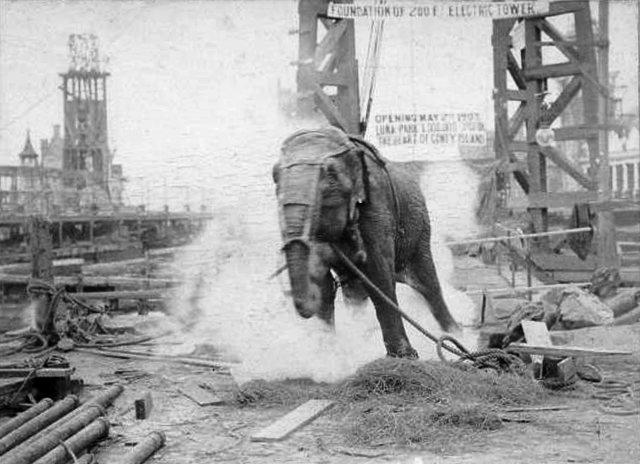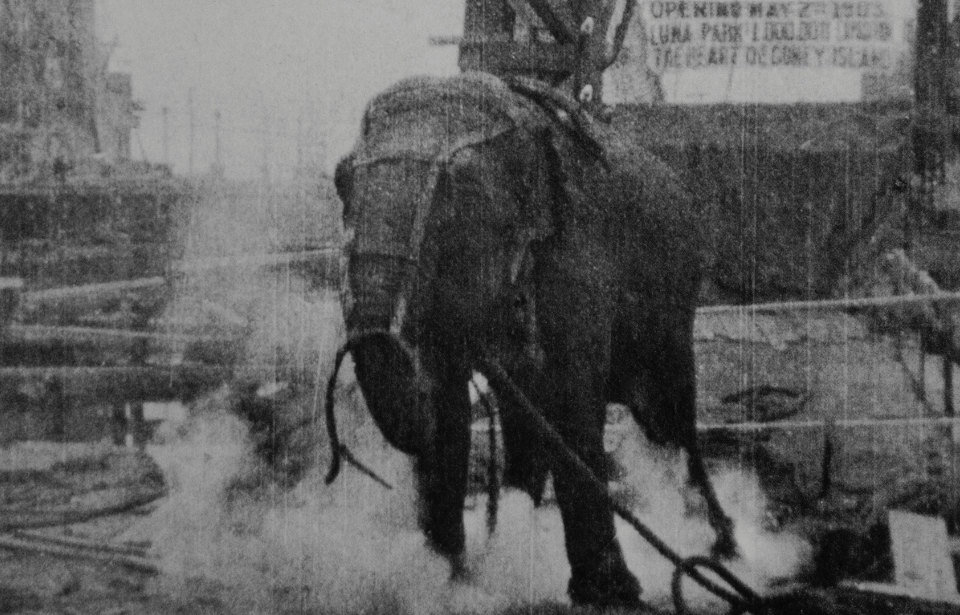On January 4, 1903, an African elephant named Topsy was electrocuted at Luna Park, Coney Island. Topsy had become famous not for her performances, but for a series of violent incidents, including the death of a trainer. Facing public pressure and concern over her behavior, the owners of Luna Park decided to put her down. However, instead of using a gun, they chose a much more shocking method—electrocution.

The execution of Topsy was filmed by the Edison Manufacturing Company, led by Thomas Edison. Many say that Edison, who was in the middle of a fierce rivalry with Nikola Tesla and George Westinghouse over the use of electricity, saw this as an opportunity to demonstrate the dangers of alternating current (AC) power. Topsy was killed using AC electricity, and the filming of her death was part of Edison’s effort to portray the technology as dangerous. However, other accounts suggest Edison had virtually nothing to do with the execution.
The public reaction to Topsy’s execution was mixed, but many were horrified by the spectacle. The electrocution, which took place in front of a crowd, sparked outrage and concern over the treatment of animals. Critics condemned both the cruelty of the act and the fact that it was used as a tool in Edison’s industrial battle. The event raised questions about animal rights and ethics, and it highlighted the darker side of public entertainment at the time.
More from us: Humanzee: A Bizarre Scientific Rumor or a Real Animal Hybrid?
Would you like to see more daily historical content from The Vintage News? What if we sent it directly to your inbox every day? Sign up here to receive our daily Today in History posts.
Topsy’s death marked a grim chapter in history. The footage of her electrocution became a symbol of both the mistreatment of animals in entertainment and the controversial practices of early filmmakers. Today, the event is remembered not just for the death of one elephant, but for its role in the history of cinema, electricity, and the growing awareness of animal rights.
